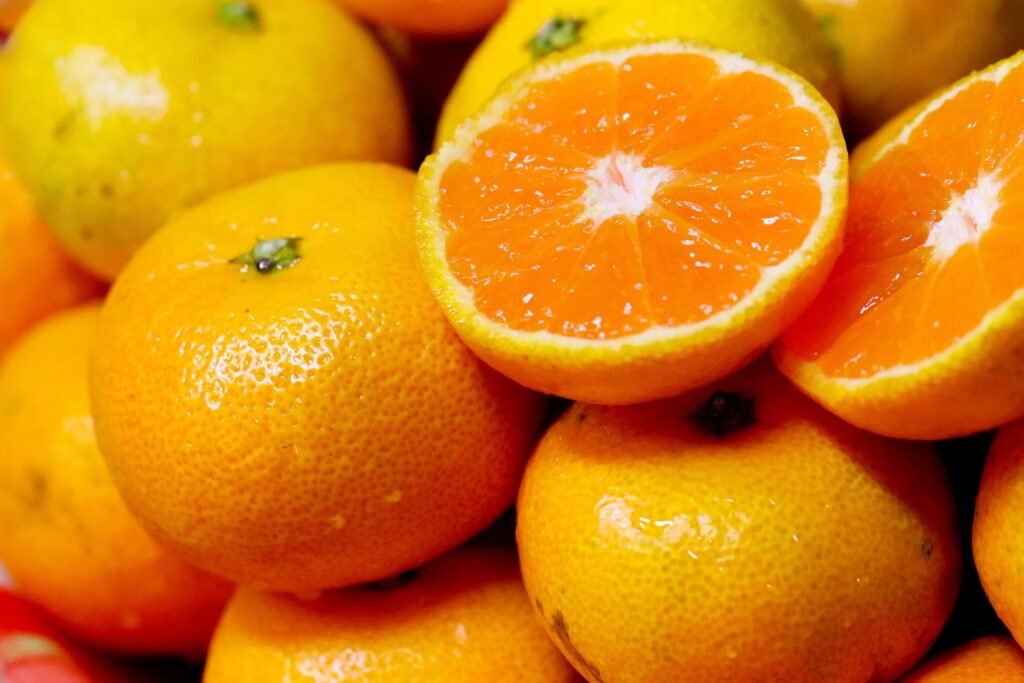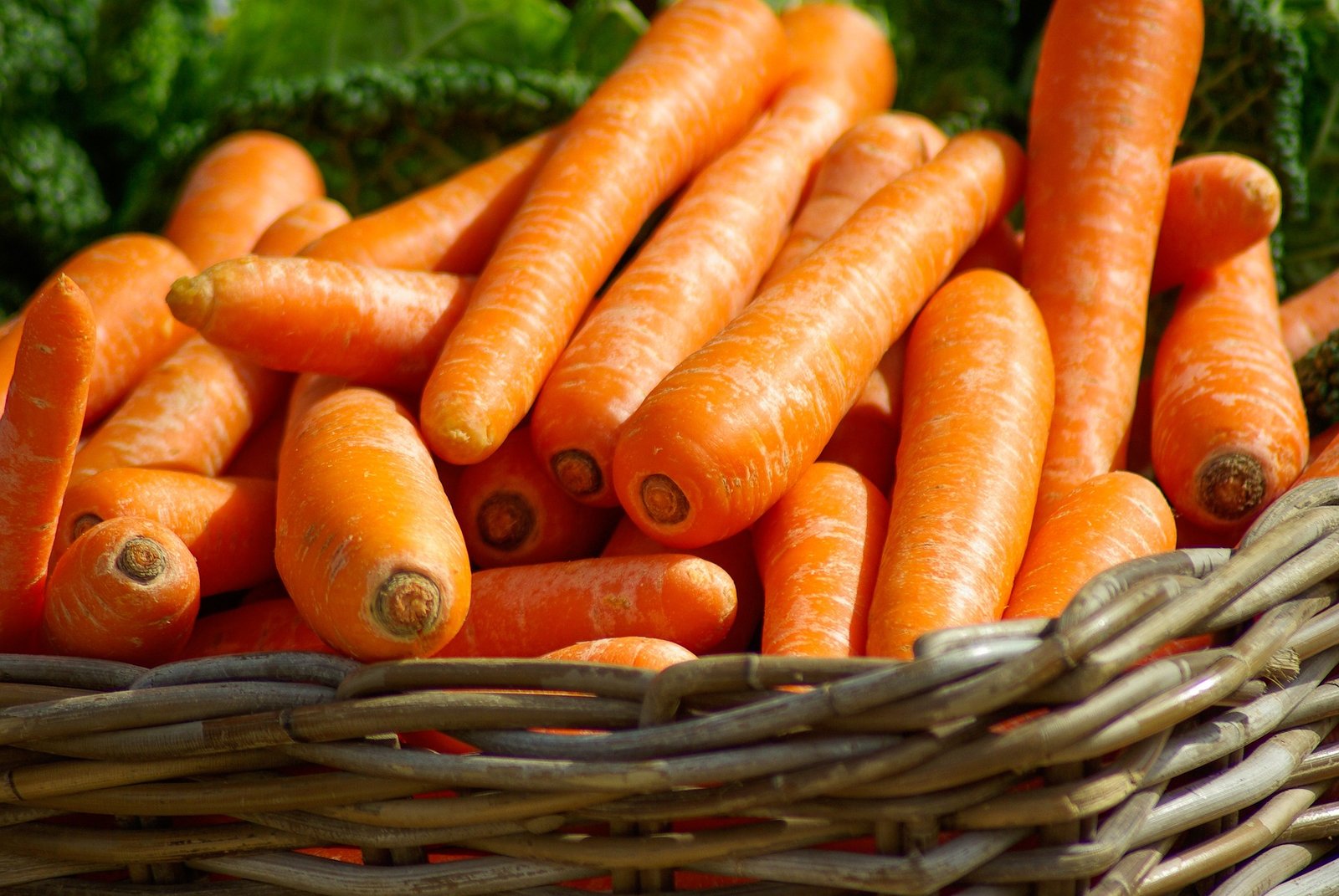Foods with Vitamins A and C Vitamins A and C are essential nutrients that play vital roles in maintaining your health. This foods rich in these vitamins, their benefits, recommended intake, signs of deficiency, and more
Vitamin A

- Vitamin A plays a critical role in maintaining health by supporting
- Eye Health: It helps the eyes adapt to low-light conditions, reducing the risk of night blindness.
- Immune Support: Boosts the production of white blood cells to strengthen the immune system.
- Cell Growth: Facilitates proper cell division and growth, essential for tissue repair and reproduction.
- Bone Health: Contributes to bone remodeling and maintaining skeletal strength.
- Skin Health: Promotes the health of skin and mucous membranes, preventing infections and dryness.
Types of Vitamin A
- Preformed Vitamin A: Found in animal-based foods such as liver, fish oils, and dairy products.
- Provitamin A Carotenoids: Found in plant-based foods like carrots and sweet potatoes, converted into vitamin A in the body
Recommended Daily Intake
- Men: 900 mcg RAE (Retinol Activity Equivalents)
- Women: 700 mcg RAE
The tolerable upper intake level (UL) for preformed vitamin A is 3,000 mcg RAE
Related : How Many Calories Are in a Chicken Breast?
Food Sources of Vitamin A
Animal-Based Foods (Preformed Vitamin A)
- Beef Liver: 7,740 mcg per 3.5 oz (860% DV)
- Lamb Liver: 7,780 mcg per 3.5 oz (864% DV)
- Cod Liver Oil: 4,080 mcg per tablespoon (453% DV)
- Eggs: 75 mcg per large egg (8% DV)
- Cheese: 74–97 mcg per ounce, depending on the variety.
Plant-Based Foods (Provitamin A)
- Carrots: 1,280 mcg per cup, cooked (142% DV)
- Sweet Potatoes: 1,403 mcg per baked potato (156% DV)
- Spinach: 943 mcg per cup, cooked (105% DV)
- Kale: 172 mcg per cup, cooked (19% DV)
- Red Bell Peppers: 257 mcg per large pepper (29% DV)
Signs of Deficiency and Toxicity
- Night blindness (nyctalopia)
- Dry eyes (xerophthalmia)
- Dry skin and brittle hair
- Reduced immunity, making the body more susceptible to infections
Toxicity Symptoms (From Preformed Vitamin A)
- Blurred vision
- Nausea and vomiting
- Bone pain
- Peeling or dry skin
- Note: Beta-carotene from plant sources is safe and does not lead to toxicity.
Related : Highest Foods in Iron
Vitamin C

Vitamin C is crucial for various functions in the body, such as:
- Antioxidant Properties: Shields cells from oxidative damage caused by free radicals.
- Collagen Production: Essential for healthy skin, bones, tendons, and blood vessels.
- Immune System Strength: Enhances the body’s ability to fight infections.
- Wound Healing: Aids in faster recovery from injuries and surgeries.
Recommended Daily Intake
- Men: 90 mg
- Women: 75 mg
- Smokers: Add 35 mg to compensate for oxidative stress caused by smoking.
- Note: Since vitamin C is water-soluble, the body does not store it, necessitating daily intake
Related : MegaFood Blood Builder Minis
Food Sources of Vitamin C
Fruits Rich in Vitamin C
- Guava: 376 mg per cup (417% DV)
- Kiwi: 134 mg per cup (149% DV)
- Oranges: 96 mg per fruit (106% DV)
- Mango: 122 mg per fruit (136% DV)
- Papaya: 88 mg per cup (98% DV)
Vegetables Rich in Vitamin C
- Bell Peppers: 149–237 mg per cup (166–263% DV)
- Broccoli: 81 mg per cup, raw (90% DV)
- Brussels Sprouts: 75 mg per cup, cooked (83% DV)
- Sweet Potatoes: 78 mg per cup (87% DV)
- Tomatoes: 22 mg per medium tomato (25% DV)
Signs of Deficiency and Overdose
- Scurvy, characterized by bleeding gums, bruising, and slow wound healing
- Chronic fatigue
- Rough, dry skin
Overdose Symptoms (Exceeding 1,000 mg/day)
- Stomach cramps
- Diarrhea
- Excessive gas or bloating
Related : Best and Worst Foods for Gout
Incorporating Foods Rich in Vitamins A and C
Here are some practical tips to add these vitamins to your daily meals:
- Breakfast: Make an omelet with spinach, red bell peppers, and cheese for a nutritious start.
- Lunch: Enjoy a sweet potato and kale salad drizzled with a citrus dressing.
- Dinner: Pair grilled salmon with roasted carrots and steamed broccoli.
- Snacks: Keep fresh guava, kiwi, or mango on hand for a quick vitamin boost.
The Takeaways
Vitamins A and C are essential for maintaining a healthy body and preventing various deficiencies and diseases. By consuming a diverse diet rich in fruits, vegetables, and animal-based foods, you can easily meet your daily requirements for these nutrients.
A balanced intake of these vitamins not only enhances your vision and immunity but also ensures vibrant skin and quicker recovery from wounds. Prioritize a colorful plate to nourish your body and enjoy the lasting benefits of these vital nutrients.
Let your meals reflect health and vitality—because you deserve it
Related : The Benefits of Lemon Water
Frequently Asked Questions
What are the best food sources of Vitamin A?
- Animal-based foods: Beef liver, lamb liver, cod liver oil, eggs, and cheese.
- Plant-based foods: Carrots, sweet potatoes, spinach, kale, and red bell peppers.
What are the benefits of Vitamin C for the body?
Vitamin C acts as a powerful antioxidant, promotes collagen production, boosts immune function, supports wound healing, and protects cells from free radical damage.
Can you consume too much Vitamin A or C?
Yes, excessive intake of preformed Vitamin A (from animal sources) can lead to toxicity, causing nausea, blurred vision, and bone pain. Overdosing on Vitamin C (more than 1,000 mg/day) may result in stomach pain, diarrhea, and bloating.
How can I include more Vitamin A and C in my daily meals?
- Vitamin A: Use sweet potatoes, carrots, or spinach in soups and salads.
- Vitamin C: Incorporate guava, oranges, or bell peppers into smoothies or snacks

 Dakari Quimby, PhD
Dakari Quimby, PhD Keri Peterson, MD
Keri Peterson, MD Isabel Vasquez, RD, LDN
Isabel Vasquez, RD, LDN Francisco J. Rivera Rosario
Francisco J. Rivera Rosario Amber Brenza, CPT
Amber Brenza, CPT Dana Ingemann, MPH, CHES
Dana Ingemann, MPH, CHES
5 thoughts on “Foods with Vitamins A and C”
Pingback: Top Cancer-Fighting Foods: Best Nutrient-Rich Choices
Your article helped me a lot, is there any more related content? Thanks!
Can you be more specific about the content of your article? After reading it, I still have some doubts. Hope you can help me.
I don’t think the title of your article matches the content lol. Just kidding, mainly because I had some doubts after reading the article.
Your point of view caught my eye and was very interesting. Thanks. I have a question for you. https://accounts.binance.com/ro/register-person?ref=V3MG69RO